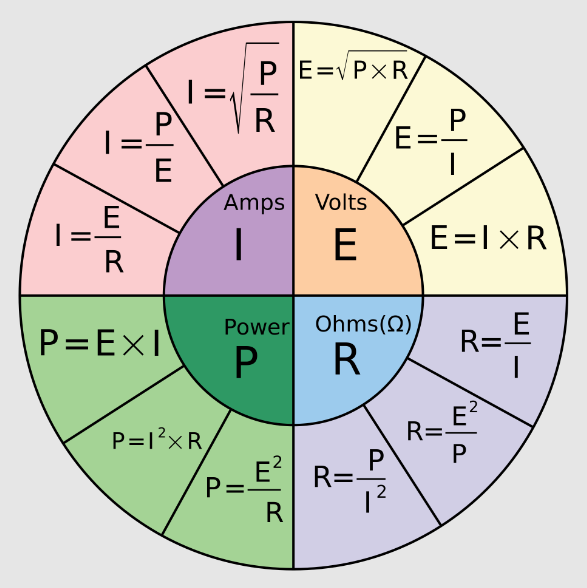 |
| Ohms Law Calculator Formula Chart , source : wikipedia.org, github.com |
Introduction:
Ohm's Law, named after the German physicist Georg Simon Ohm, is a fundamental principle in electronics and electrical engineering. It describes the relationship between voltage, current, and resistance in an electrical circuit. This comprehensive guide provides a thorough understanding of Ohm's Law, including its principles, formulas, practical examples, and free software tools for analysis and calculation.
1. Principles of Ohm's Law:
Ohm's Law states that the current ( I ) flowing through a conductor between two points is directly proportional to the voltage ( V ) across the conductor and inversely proportional to the resistance ( R ) of the conductor, as expressed by the formula:
V = I x R
I = V/R
R = V/I
P = V x I or I^2*R
*see formula chart above
This relationship is fundamental to understanding how voltage, current, and resistance interact in electrical circuits.
2. Formulas of Ohm's Law:
Ohm's Law can be expressed in three different forms, each solving for one of the variables ( V , I , or R ):
- Voltage (V) = Current (I) × Resistance (R)
- Current (I) = Voltage (V) ÷ Resistance (R)
- Resistance (R) = Voltage (V) ÷ Current (I)
These formulas are essential for calculating voltage, current, and resistance in electrical circuits.
3. Practical Examples of Ohm's Law:
Ohm's Law is applied in various practical scenarios to analyze and design electrical circuits. Some examples include:
- Calculating the current flowing through a resistor given its resistance and the applied voltage.
- Determining the voltage drop across a resistor in a series circuit.
- Finding the resistance of a resistor based on the voltage applied and the current flowing through it.
4. Free Software Tools for Ohm's Law Analysis:
Several free software tools are available for analyzing and calculating electrical circuits based on Ohm's Law:
- Circuit Simulator: Online circuit simulators such as Tinkercad and CircuitLab allow users to design and simulate electronic circuits, including resistors, voltage sources, and current sources, to analyze circuit behavior based on Ohm's Law.
- SPICE Software: SPICE (Simulation Program with Integrated Circuit Emphasis) software packages like LTspice and Ngspice provide powerful tools for simulating and analyzing electronic circuits, including complex circuits with multiple components and nonlinear elements.
- Calculator Apps: Numerous smartphone apps and web-based calculators are available for performing quick calculations based on Ohm's Law, allowing users to determine voltage, current, and resistance values in real-time.
One of free web Ohms Law Calculator online from Github, written in Javascript , https://joshmatthew.github.io/ohms-law-calculator/
Conclusion:
Ohm's Law serves as a cornerstone principle in electronics and electrical engineering, providing a fundamental understanding of the relationship between voltage, current, and resistance in electrical circuits. By applying Ohm's Law and utilizing free software tools for analysis and calculation, engineers, students, and hobbyists can design, simulate, and troubleshoot electronic circuits with precision and efficiency. With its simplicity and versatility, Ohm's Law continues to be an indispensable tool in the study and practice of electrical engineering.
